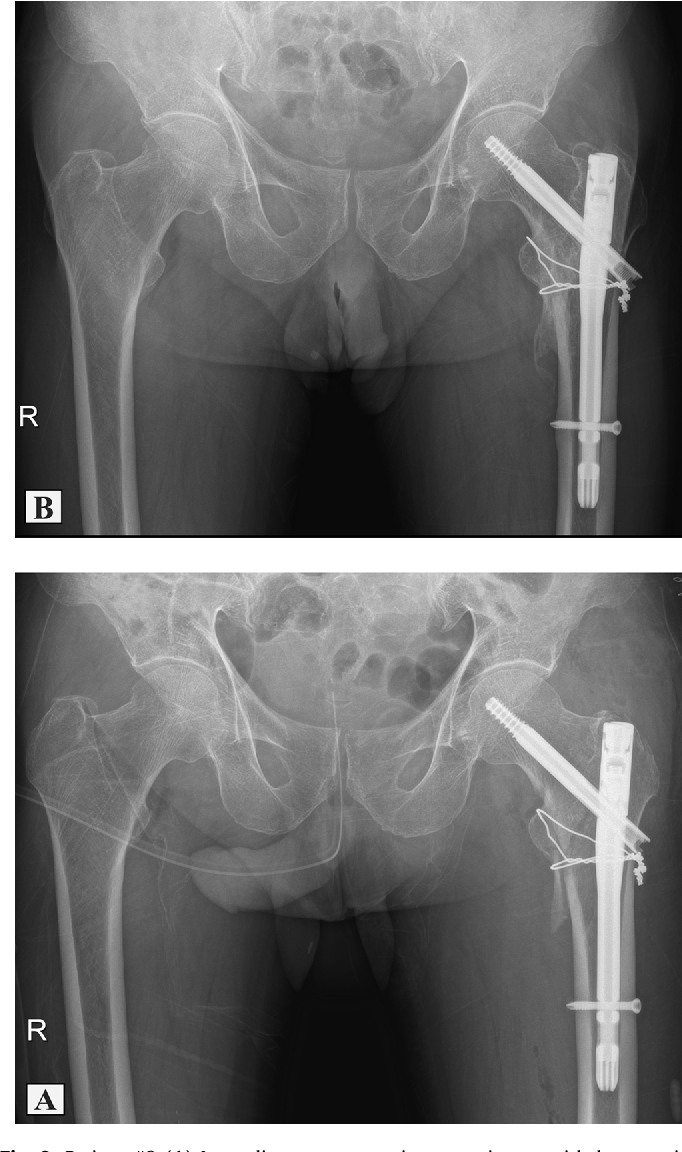

Full-length radiographs of the femur are useful to assess for deformities of the femur shaft which could affect the placement of an intramedullary nail and evaluation of prior implants in the distal femur. Although the diagnosis can be made without pelvic films, pelvic radiographs are useful to assist in preoperative planning for restoration of the proper neck-shaft angle. The recommended views include the anteroposterior (AP) pelvis, AP and cross-table lateral of the affected hip and full-length radiographs of the affected femur. Plain radiographs are the initial films chosen to evaluate for these fractures. In type II fractures, the A subclassification describes a 3 part fracture with a separate GREATER trochanter fragment while the B subclassification describes a 3 part fracture with a LESSER trochanter fragment. The A subclassification in type I fractures is used for non displaced fractures while B fractures are displaced. Type I is a 2 part fracture, Type II are 3 part fractures and Type III are 4 part fractures. This Evans classification breaks down intertrochanteric femur fractures based on displacement, number of fragments and the type of fragment displaced. Examples of unstable fractures include: comminution of the posteromedial cortex, a thin lateral wall, displaced lesser trochanter fracture, subtrochanteric extension and reverse obliquity fractures. Stable fractures have an intact posteromedial cortex and will resist compressive loads once reduced. Determination of stability is important as it helps determine the type of fixation required for stability.

Every patient with a fall-related hip fracture should get it fixed within 24-48 hours.These fractures are usually a result of a ground-level fall in the elderly population and are classified as either stable or unstable. Too often, patients try to “wait out” the pain instead of seeking immediate treatment – even if they can’t bear weight.ĭelaying treatment can lead to serious, even fatal complications. Many hip fractures occur in the upper end of the thigh, or femur bone, and require surgery. Phones haven’t helped matters, either, as more people trip while walking and looking at their smart phone.

Increased awareness and conversations about healthy aging are key to reducing these painful, potentially fatal injuries. But members of this older patient population face specific – and often preventable – health risks such as falls resulting in hip fractures. Ironically, many people aren’t keen on talking about aging. We live in an aging society every day, 10,000 people in the U.S.


 0 kommentar(er)
0 kommentar(er)
